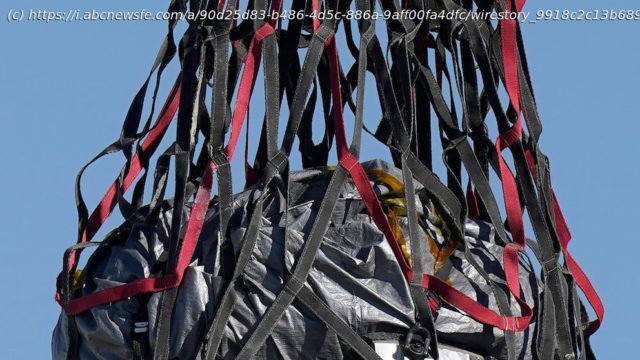A space capsule carrying NASA’s first asteroid samples has landed in the Utah desert
NASA’s first asteroid samples fetched from deep space parachuted into the Utah desert Sunday to cap a seven-year journey.
In a flyby of Earth, the Osiris-Rex spacecraft released the sample capsule from 63,000 miles (100,000 kilometers) out. The small capsule landed four hours later on a remote expanse of military land, as the mothership set off after another asteroid.
“We have touchdown!” Mission Recovery Operations announced, immediately repeating the news since the landing occurred three minutes early. Officials later said the orange striped parachute opened four times higher than anticipated — around 20,000 feet (6,100 meters) — basing it on the deceleration rate.
To everyone’s relief, the capsule was intact and not breached, keeping its 4.5 billion-year-old samples free of contamination. Within two hours of touchdown, the capsule was inside a temporary clean room at the Defense Department’s Utah Test and Training Range, hoisted there by helicopter.
The sealed sample canister will be flown on Monday to NASA’s Johnson Space Center in Houston, where it will be opened in a new, specially designed lab. The building already houses the hundreds of pounds (kilograms) of moon rocks gathered by the Apollo astronauts.
“We can’t wait to crack into it. For me, the real science is just beginning,» said the mission’s lead scientist, Dante Lauretta of the University of Arizona. He’ll accompany the samples all the way to Texas.
Lori Glaze, NASA’s planetary science division director, added: “Those are going to be a treasure for scientific analysis for years and years and years to come.”
Scientists estimate the capsule holds at least a cup of rubble from the carbon-rich asteroid known as Bennu, but won’t know for sure until the container is opened in a day or two. Some spilled and floated away when the spacecraft scooped up too much material, which jammed the container’s lid during collection three years ago.
Домой
United States
USA — Science NASA's first asteroid samples land on Earth after release from spacecraft






